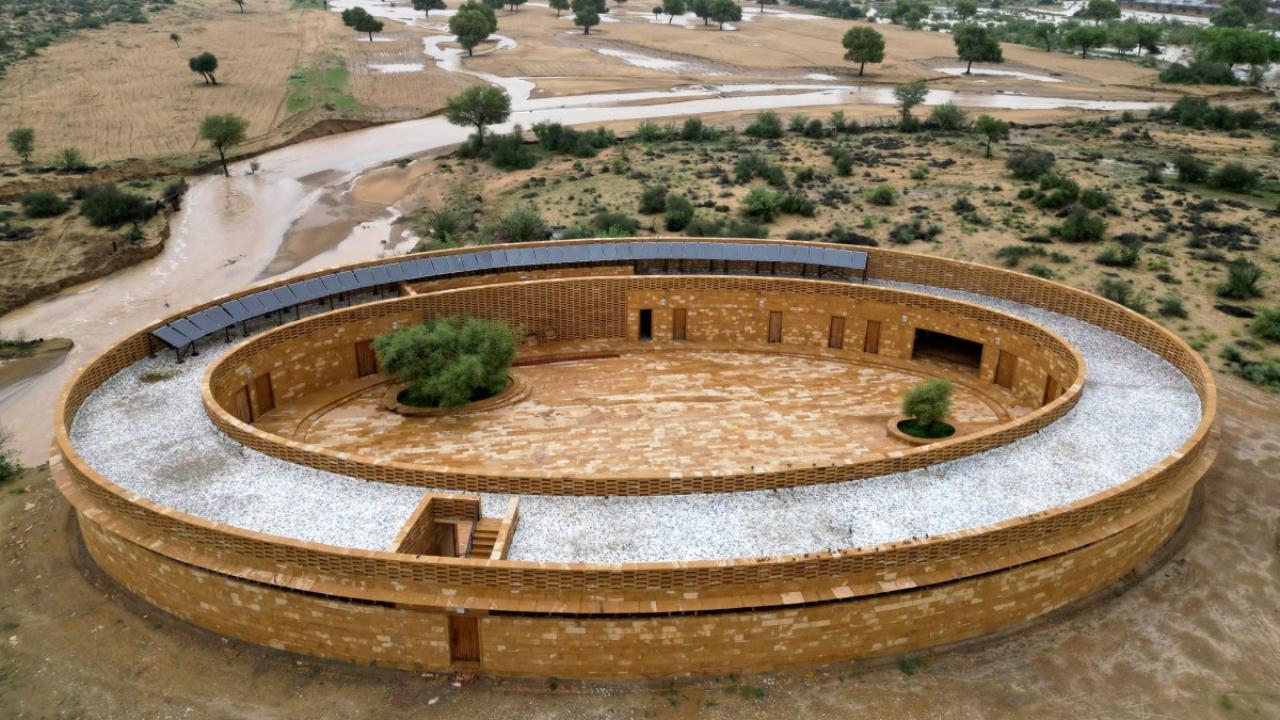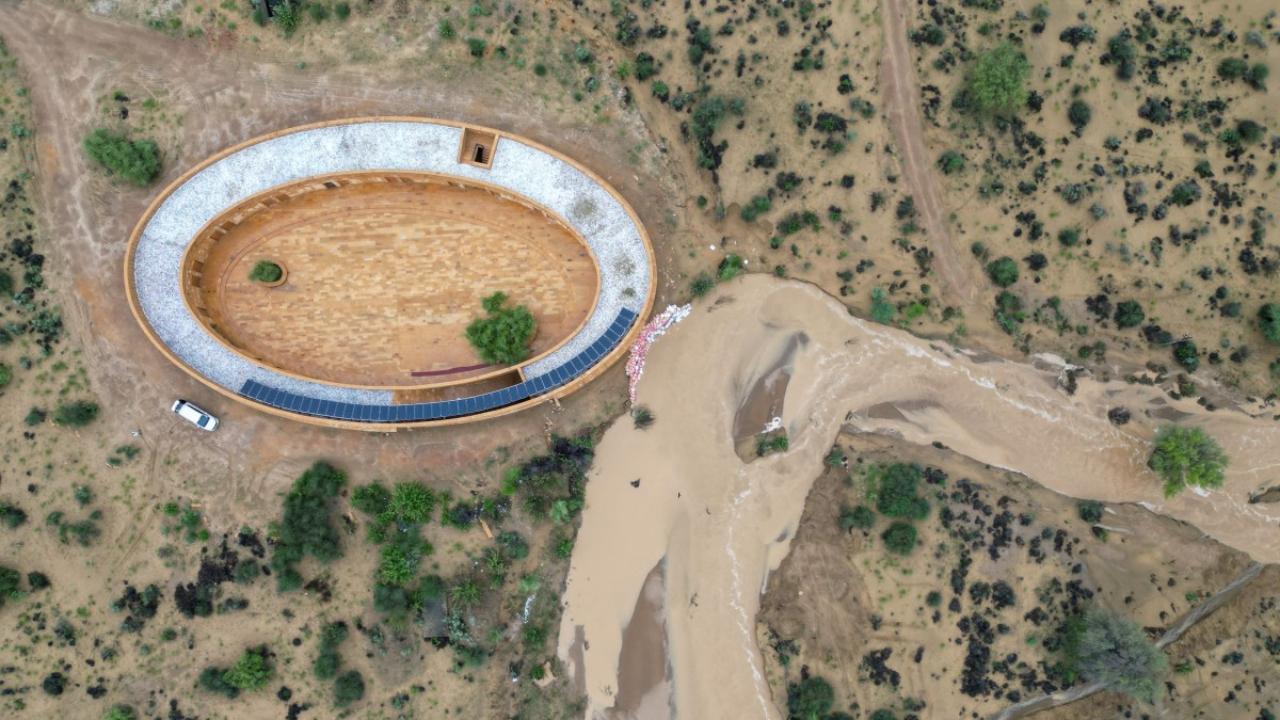
India recorded extremely high temperatures in various cities this year. But in the sweltering heat of India's Thar desert, where summer highs soar above 50 degrees Celsius, an architecturally striking school made with a combination of age-old techniques and modern design is an oasis of cool. The Rajkumari Ratnavati Girls' School uses the same yellow sandstone as the 12th-century fort in nearby Jaisalmer, in India's western state of Rajasthan. (Report and Pics: AFP)
Updated On: 2024-08-27 01:47 PM IST
Compiled by : Raaina Jain


Like the fort, the school has thick rubble walls that help bounce back the heat, while the interior is plastered with lime, a porous material that regulates humidity and aids natural cooling. Unlike the ancient fort, its roof is lined with solar panels, which provide all the school's power in an area with frequent electricity cuts.
Temperatures inside the school, designed by US-based architect Diana Kellogg and built by local artisans can be as much as 20 percent lower than those outside.
The school's classrooms are arranged around an open elliptical courtyard resembling a Roman coliseum, and walls with grids of vents create shade while allowing for cooling airflow. Elevated windows allow hot air to escape as it rises.
Rainwater is harvested from the flat roof. In some places, the walls are dotted with perforations -- a technique known as "jali". It is used to promote ventilation, creating a breeze channelled by the building's oval shape.
Kellogg, the architect, said combining tradition with modern design and sustainable techniques was key. But while her design focused on tackling baking heat, it also faces an unexpected, climate change-driven problem -- floods. Increased rainfall has begun to impact the school, which was designed for a drier climate.